Stove of the Week: MSR Simmerlite
Recently, I was asked by a mountaineering friend about ways to melt snow for drinking water that are light weight. I'm therefore posting a series within the Stove of the Week series on light weight winter capable stoves.
In that vein, this week's stove is the MSR Simmerlite. Let's start it off right with a flame shot:
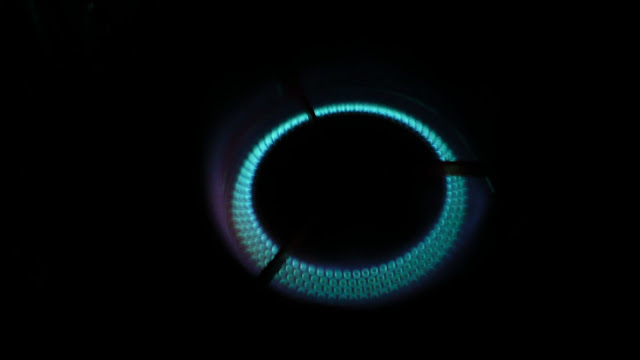
Today's destination is Haines Canyon, site of much of my stove testing. I see the recent wind storm has taken its toll.

The good news is that the creek is running well which means we'll have plenty of water for use with our Simmerlite.

Now, if you're talking about cold weather capable stoves, then no discussion is complete without discussing liquid fueled stoves. Liquid fueled stoves will operate in the coldest of temperatures. To this day, explorers and researchers in Antarctica use liquid fueled stoves. The fuels used are typically "white" gasoline (Coleman type fuel) or kerosene.
Some time ago, MSR set out to create a light weight liquid fuel stove. They came up with the Simmerlite. It should be noted that the Simmerlite is a white gasoline stove only. The Simmerlite will not burn kerosene properly.

In the Simmerlite, MSR succeeded admirably in their quest for a light weight liquid fueled stove.
Then MSR made a serious mistake. They let the marketing department get a hold of it. It went something like this: "People want a stove that simmers," said the marketing department, "We'll emphasize this stove's ability to simmer by naming this stove, the Simmerlite. We'll sell thousands!"
"B-b-b-but it doesn't simmer" stammered the stove engineers. "Not even close."
"Bosh! Down with you nay-sayers!" cried the marketing department. "We've got stoves to sell and bonuses to earn! Out of our way!"
And so it was, and this engineering success became a marketing boondoggle. Instead of focusing on the Simmerlite's most valuable attribute, it's light weight, MSR damaged its reputation and created customer ill will by marketing a simmering stove -- that doesn't simmer. Well, OK, maybe it didn't go exactly like that, but surely it must have been something like that. How else to explain the word "simmer" in a stove that doesn't?
Now, the vagaries of manufacturing being what they are, there is the odd exception out there. I do know of one person whose Simmerlite actually simmers. Generally, though, the Simmerlite doesn't simmer.
So, that misconception dispelled, let's set our Simmerlite up. Here's a photo of the Simmerlite ready to go. Immediately behind the Simmerlite is her sister stove, the MSR Wind Pro which is essentially the same stove except that the Wind Pro has been modified to run on gas canisters. 
But enough about the Wind Pro; the Wind Pro is next week's stove.
Here's the Simmerlite, windscreen in place, chugging along, heating water for my morning tea.

Any stove worth it's salt must pass the "tea test" (boiling water), and judging by the steam coming out of the tea kettle in this photo, I'd say the Simmerlite has passed the tea test with flying colors.

Ah! There we are. Delicious.

Now, I realize that liquid fueled stoves are perceived as challenging by some. In particular, priming seems to put people off. Really, once you get the hang of it, liquid fueled stoves are no big deal, and they'll run in as cold a temperature as you can stand. I'll talk about tips and tricks for priming liquid fueled stoves in the weeks to come.
Well, that's it for today. Time to hit the road for home.
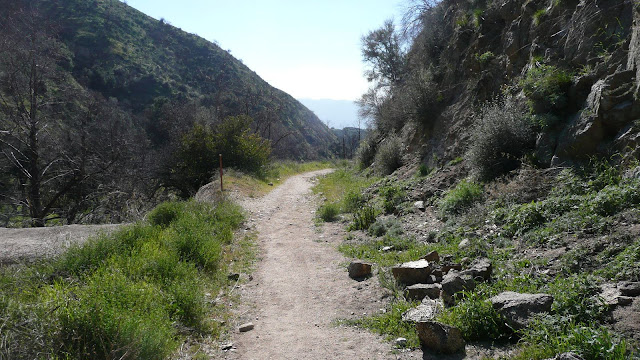
Thank you for joining me on another adventure in stoving.
HJ
Some summary information:
What's good about it?
It really is light.
It's fairly compact.
The hose is much more flexible than previous MSR stoves.
It's liquid fueled and will work in as cold a temperature as you can stand.
Liquid fuel is the least expensive fuel, and there aren't all those "dead" canisters that have to be landfilled or recycled. Remember, while recycling is better than putting them in a land fill, recycling is still costly from an environmental standpoint.
What's bad about it?
Pumping and priming -- but really they're no big deal; they just take a little practice.
The pot supports are a little slidey. They could be a little more grippy.
It does not simmer.
Overall, the Simmerlite is a good light weight winter capable stove.
Oh, my, look at the time. Another week has passed. It must therefore be time for another "Stove of the Week" (SOTW) post.
Related posts:
Recently, a friend of mine who enjoys mountaineering asked the proverbial $64,000 question, "what's a good, light weight way to melt snow?" A fair question I might add, and perhaps one that I can actually shed some light on. So, for the next few weeks, my SOTW posts will focus on winter capable stoves. In that vein, this week's stove is the Coleman Xtreme, shown here in full fury.

The Coleman Xtreme is a lightweight, winter capable liquid feed remote canister stove. Coleman rates it as operational down to about -4F (-20C). That's pretty dang good for a gassie. I've read posts on the net indicating that it will operate down as low as -10F (-23C), which is extremely good for a gas stove.
Let's take her for a whirl, shall we? For this week's post, we'll head over to the former Cobb Estate in Altadena, CA, now part of the Angeles National Forest. Here we'll catch the Sam Merrill Trail to Echo Mountain.
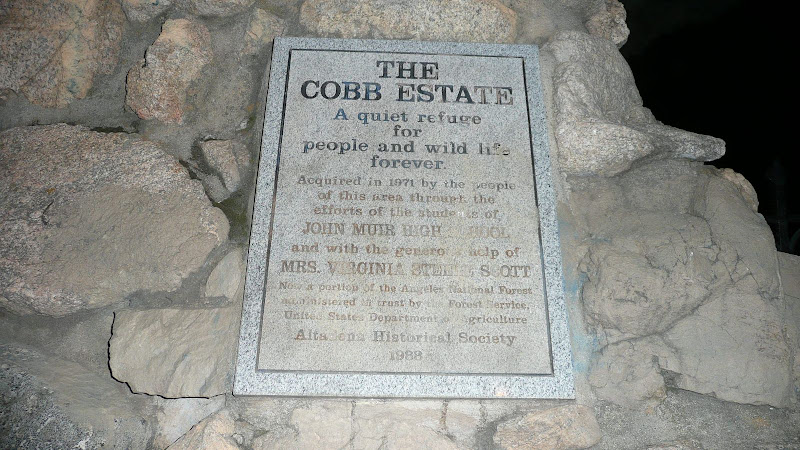
At the top, we have a commanding view of the San Gabriel Valley.
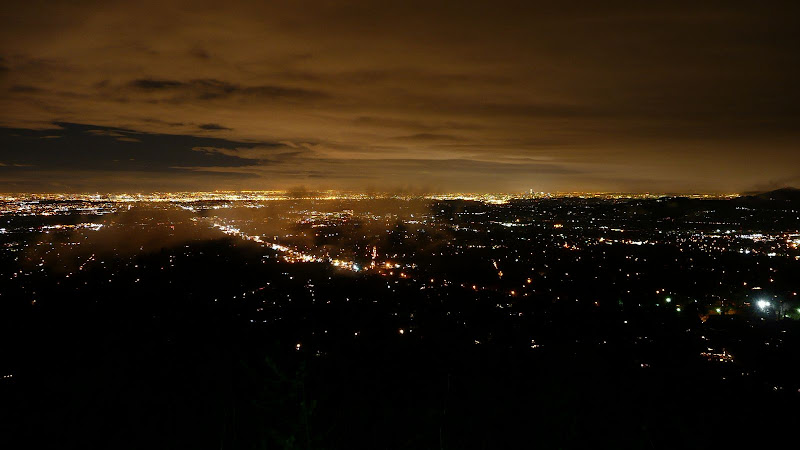
For tonight's stoving, we'll set up here on what remains of the front steps of Echo Mountain House, a hotel built in the 1800's that burned down years ago.
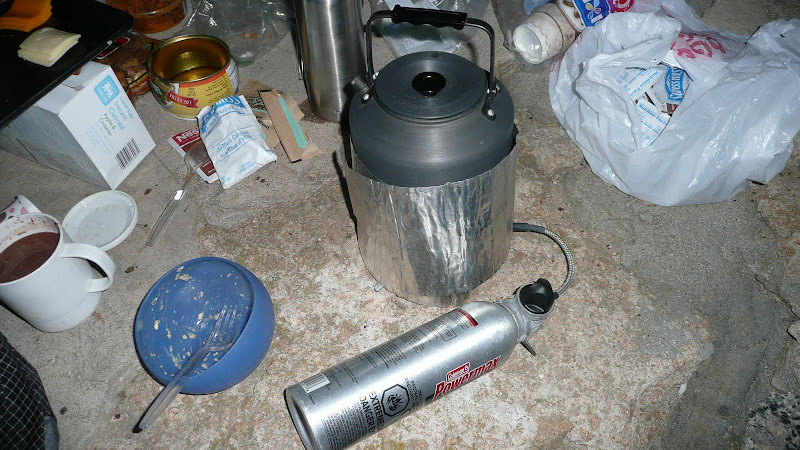
The pot's on to boil!
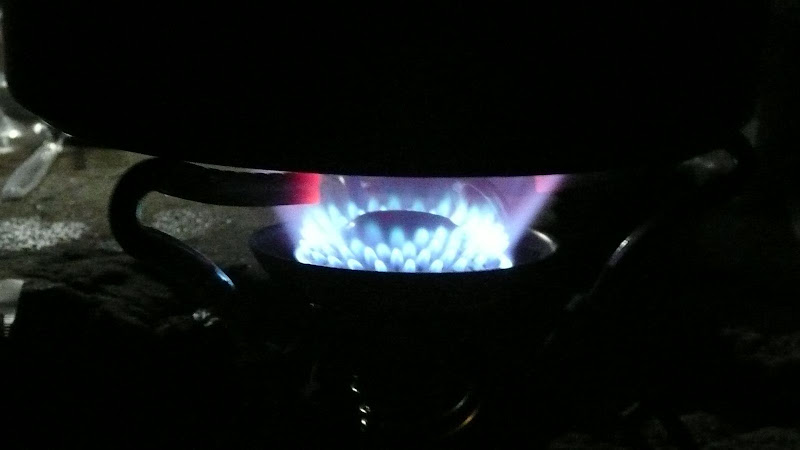
And in very short order, we've passed the tea test.

So, let's get to know a bit more about this week's stove. For those whose eyes glaze over with details, I'll include a summary at the bottom indicating the pros and cons of this stove for winter use.
Here's a shot of the Xtreme deployed and ready to go.
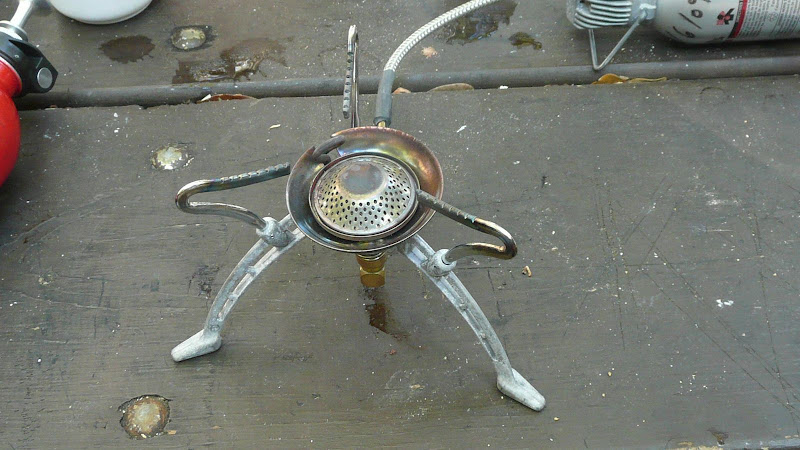
--WARNING, POTENTIALLY BORING TECHNICAL SECTION--
Before I go too much further, let me define some terms. First, there are generally two types of gas stoves: upright canister and remote canister (yes, there are plenty of exceptions). An upright canister stove is a stove where the burner mounts directly on top of the canister. Examples would include the MSR Pocket Rocket, the Optimus Crux, and the original Jetboil. A remote canister stove's burner is separate from the canister and draws gas via a fuel line. Examples would include the MSR Wind Pro, the MSR Rapid Fire, and the Primus Eta Power.
Second, there are two ways to deliver gas to the burner of a gas stove, vapor feed and liquid feed. In vapor feed mode, the fuel is delivered to the burner as a gas. In liquid feed mode, the fuel, though it would be a gas at room temperature and pressure, is delivered still under pressure as a liquid. You've heard the term LPG (Liquified Petroleum Gas)? That's exactly what this is. The gas is under such pressure that it liquifies into LPG and is delivered in that liquid state to the burner.
In terms of winter capability, why might it matter in what state the fuel is delivered to the burner? Well, canister fuel typically consists of some mix of the following three fuels: butane, isobutane, and propane. Each of these fuels vaporizes at a different temperature: butane at 31F (-0.5C), isobutane at 11F (-11.7C), and propane at -44F (-42.1C). If you deliver the fuel as a gas, it has to vaporize before it reaches the burner. If the outside temperature is lower than the vaporization point of your fuel, your fuel won't vaporize (it'll stay liquid), and your stove ceases to function. You can shake your canister and hear fuel sloshing around, but your stove is, quite literally, out of gas.
If on the other hand, you deliver the fuel as a liquid, then obviously there's no need to vaporize the fuel as it leaves the tank. Rather, the vaporization occurs at the burner where heat is available from the flame rather than from the surrounding air. In order to heat the fuel to the point of vaporization, typically there is a "pre heat loop" (aka "generator") in the fuel line that extends into the flame. Look at the very first photo in the first post of this thread. Note the dark object in the flame. This is the top of the loop. The fuel flows out of the canister, down the fuel line, and into the loop. The fuel is heated as it passes through the loop, and the liquid fuel turns to vapor, and the vapor exits via the burner and burns.
Hopefully I haven't lost anyone as I've explained this. It is a little bit complicated. If you didn't follow me completely, don't worry about it. The bottom line is that a liquid feed gas stove can be used in temperatures that are much lower than those in which a vapor feed gas stove can be used.
--END OF POTENTIALLY BORING TECHNICAL SECTION--
Now then, one thing you should be aware of with this stove is that it uses a special Powermax canister as shown in the photo below.

A Powermax canister has a hexagonal connector.
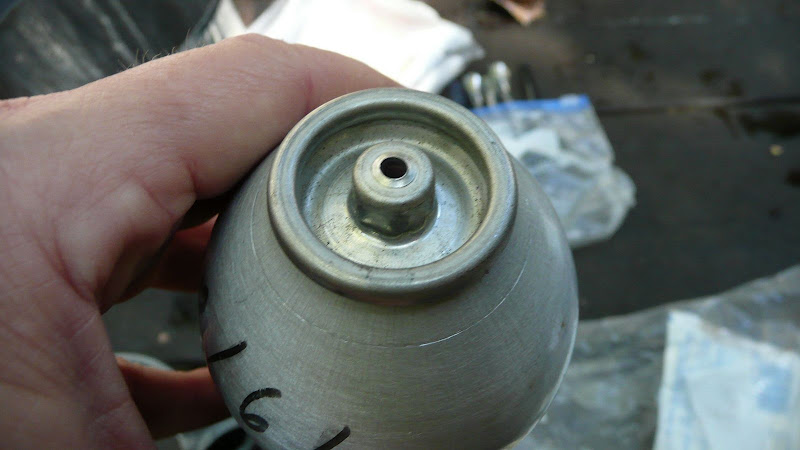
Note that this connector is completely different than the standard UNEF 7/16" threaded canisters (below).
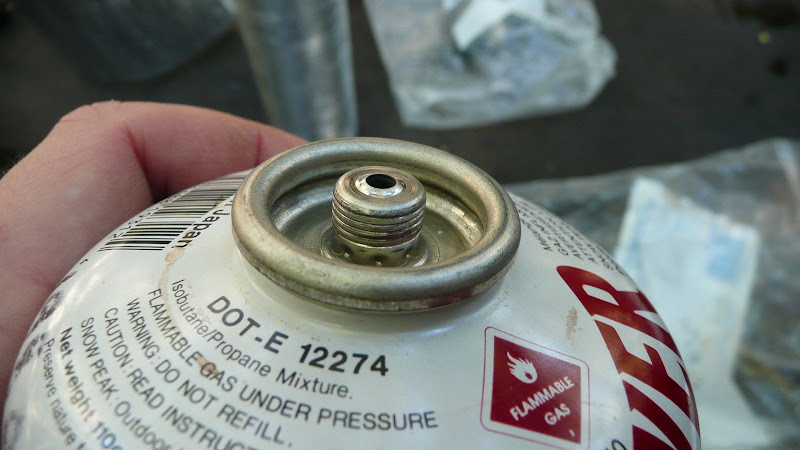
The connector plugs into this assembly on the stove's valve:
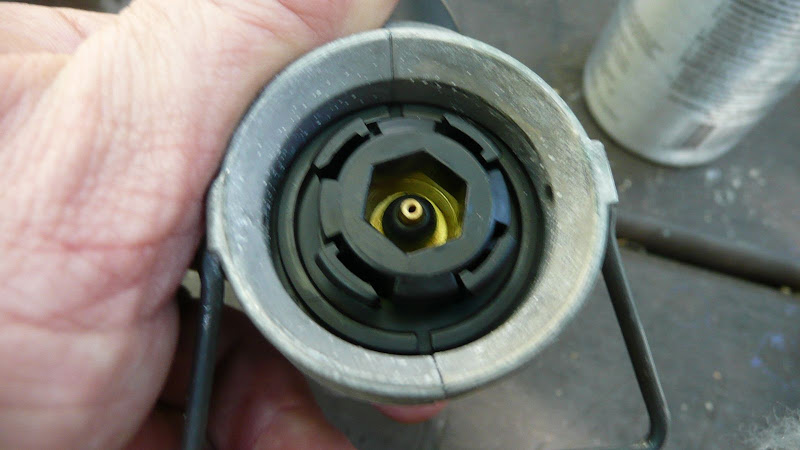
It's important to know that this stove uses different canisters because these Powermax canisters are generally less widely available than standard threaded canisters. In major metropolitan areas in the United States, it's generally not a problem. For example here in Los Angeles, Sports Authority, Big 5, REI, and Sport Chalet all carry the Powermax canisters. Elsewhere, such may not be the case. However, because of the stove's nature, it has a loyal following. One just has to make sure that the procurement of fuel is properly planned for.
These canisters do have several advantages:
1) They are made out of light aluminum instead of heavy steel. An empty 300g sized Powermax canister actually weighs less than an empty 100g sized standard threaded canister. You're lugging around a lot less of the dead weight of packaging. Packaging won't cook your supper. Gas will.
2) The canisters are side laying and are designed to feed fuel in liquid form with out the hassle of having to mess with fittings and having to prop up standard threaded canisters so that they'll stay inverted. If that last bit about inverted standard threaded canisters didn't make sense, I'll come to that in another week's post. Stay tuned.
3) The canisters, when depleted, can be punctured and recycled just as you would an aluminum can.
Recall that I said that this is a remote canister stove. Why might that be important? Well, if your canister is directly attached to your burner and you use a windscreen, the windscreen will reflect heat back to the canister. If your canister heats up to somewhere in the neighborhood of 200F (93C), KABOOM!, you no longer have a stove, you have an hand grenade, and let's just say that supper is now the least of your worries.
With a remote canister, the fuel is outside the windscreen. Problem solved; you may use a windscreen without fear, and trust me if you're cooking in cold temperatures (remember, we are talking about melting snow here), you want every advantage you can get. A windscreen not only blocks wind, but it traps heat, making your stove more efficient and keeping you hydrated. Recall that staying hydrated is critical if one is to avoid hypothermia.
An Xtreme with a windscreen (perfectly safe):
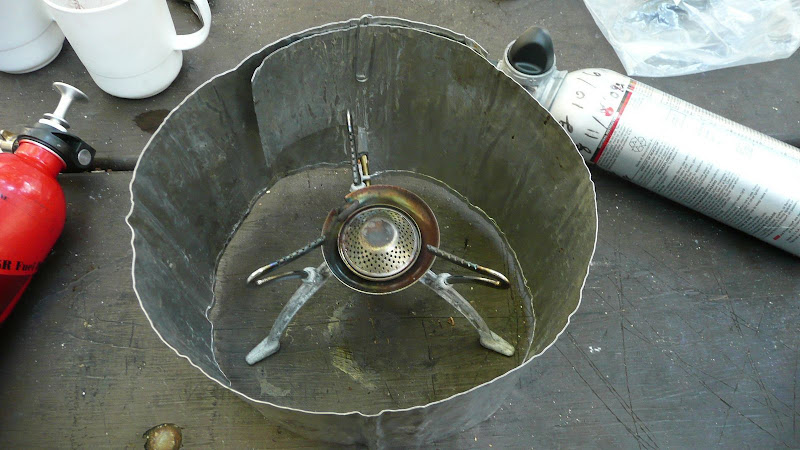
Regrettably, though the Xtreme is a fine stove, it never achieved acceptance with the public, and Coleman has discontinued it. Used Xtremes are still available. Coleman is still selling at last check other appliances that use the Powermax canister, and Coleman has publicly committed to continuing to manufacture the Powermax canister. Admittedly, this stove is a fairly specialized piece of equipment, and one has to go to a bit more trouble to procure and fuel it. I submit to you, though, that this stove because of its unique and superior design is worth that extra bit of trouble and is therefore worthy of your consideration as a winter capable stove.
Let me leave you with one more shot of the Xtreme, here demonstrating her wonderful simmering ability.

This has been a most long winded post. I thank you for your patience, and I thank you for joining me in another adventure in stoving.
It's now time to head back down the mountain,

and I therefore bid you good night.
HJ
SUMMARY OF PROS AND CONS
Pros
-A relatively lightweight, stable, wind-resistant (with a screen), winter capable gas stove. The convenience of gas with good cold weather functionality. That's the real hallmark of this stove.
-For a remote canister stove, the Xtreme is lightweight at about 11oz (312g).
-Can use a windscreen safely and easily.
-Rated to -4F (-20C) and quite possibly good down to temps of -10F (-23C).
-Lightweight, easy to use canisters.
-Simmers well
-Quite powerful.
-Fuel is generally less expensive than standard threaded canisters.
-Stable, can handle larger pots than upright canister stoves (you need to be able to handle a bigger pot for snow melting)
Cons
-Discontinued. A used stove must be located*. Parts will eventually become hard to find.
-Powermax fuel is less widely distributed. This will be a problem in some areas and no trouble at all in others.
HJ
*Note: The three legged Xtreme has a four legged sister, the Xpert. Xperts for whatever reason seem to be easier to come by. If you can't find an Xtreme, you may be able to find an Xpert. Xperts typically are less expensive than the Xtreme, but they do weigh a couple of ounces more.
Well, another week has passed, so it's time to post another stove. This week, the stove of the week is the Tibetan Ti Wing Stove. At 12g, the Tibetan Ti Wing Stove is one of the lightest backpacking stoves there is. Every investigation I've read lists hexamine as the lightest overall fuel, all things considered (stove, packaging, the fuel itself).
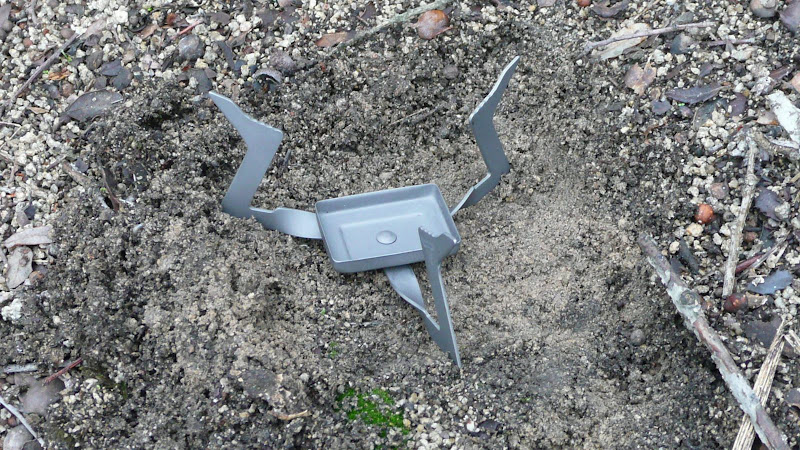
The Tibetan Ti Wing Stove is a solid fuel stove. It is typically used to burn hexamine cubes or tablets. ESBIT brand is shown on the left and Stansport brand is shown on the right. ESBIT is the "name" brand and is generally more expensive but is also, at least where I live, more widely available.
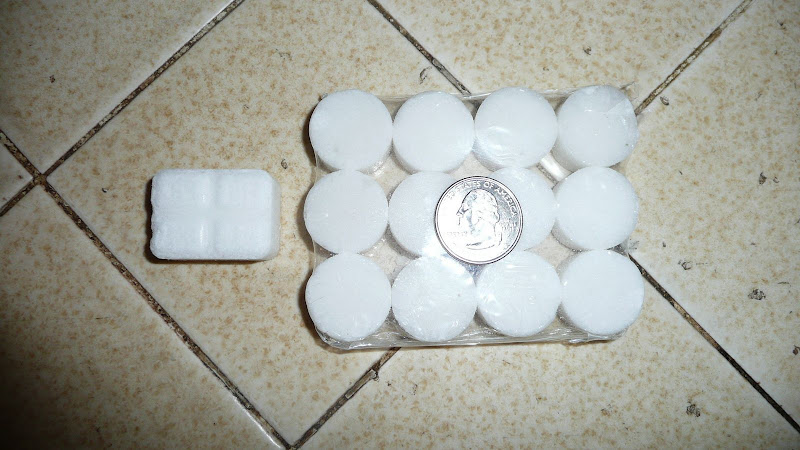
The Ti Wing stove can also burn other things like military trioxane (toxic), Wetfire Tinder, etc.
OK, let's head out to one of my local test beds, the Verdugo Mountains of Southern California.
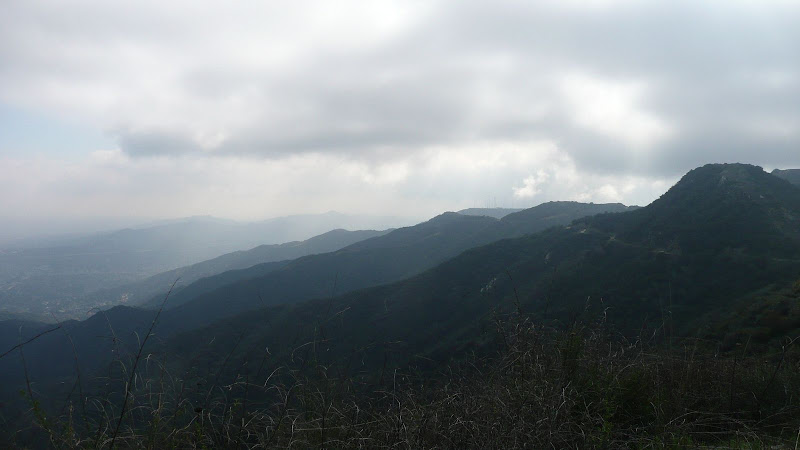
Finding a suitable spot, I unfold the three "wings" of the stove and place an ESBIT cube onto the burner pan. Note that I've displaced the cube to the right. Sometimes the cubes are a bit hard to light. Being able to get a flame under the cube helps substantially.
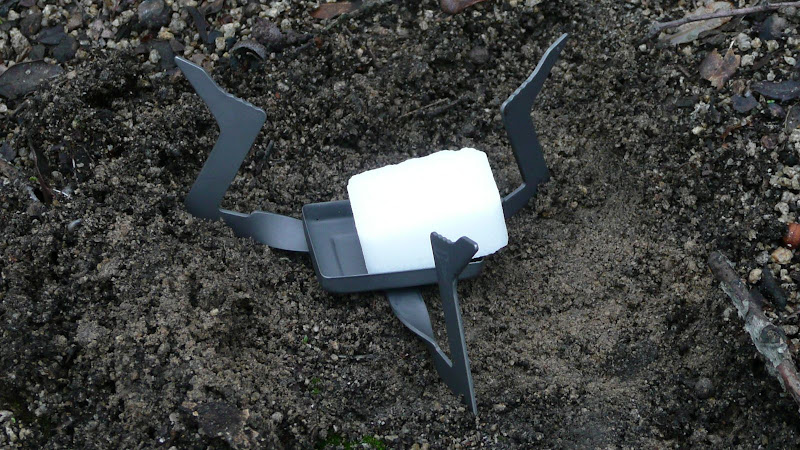
And after a moment, we have flame. Note that the flame is quite yellow. Apparently the US military abandoned hexamine as a fuel because of this yellow flame and went to trioxane instead which has a much more subtle, blue flame. Trioxane is however toxic both in terms of touching the fuel and in breathing the fumes. Use trioxane with care.
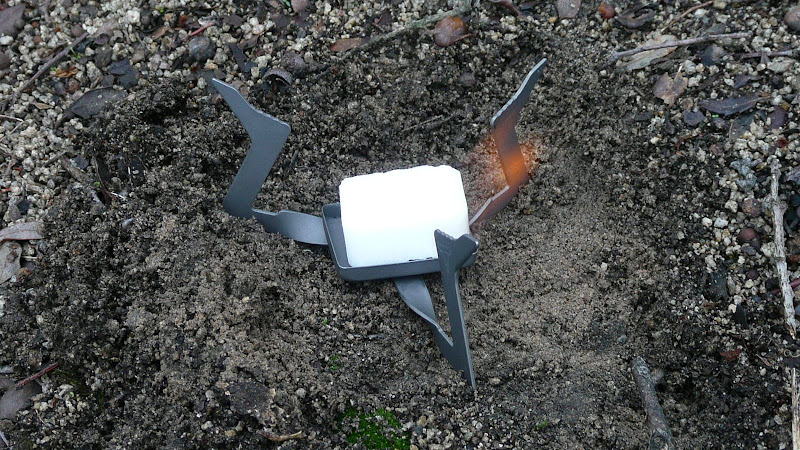
Ti Wing Stove in use
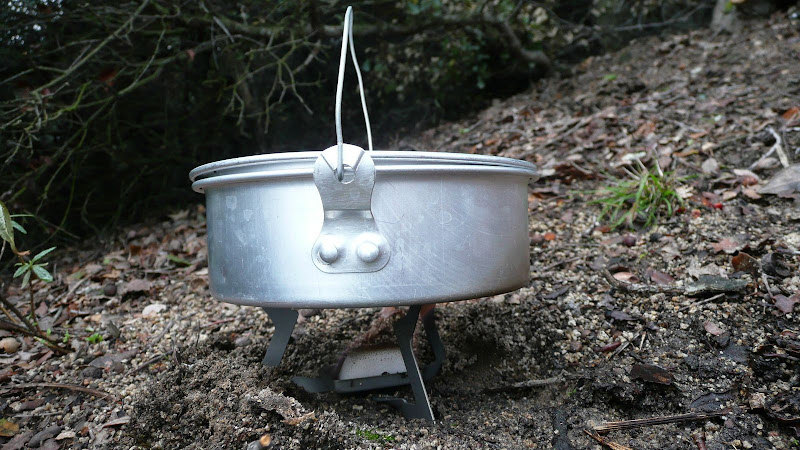
Hexamine isn't a powerful fuel. If you're used to the boil times of stoves that use petroleum based fuels, hexamine will be considerably slower. Hexamine's power compares favorably to alcohol. Nonetheless, in fairly short order, we pass the "tea test".
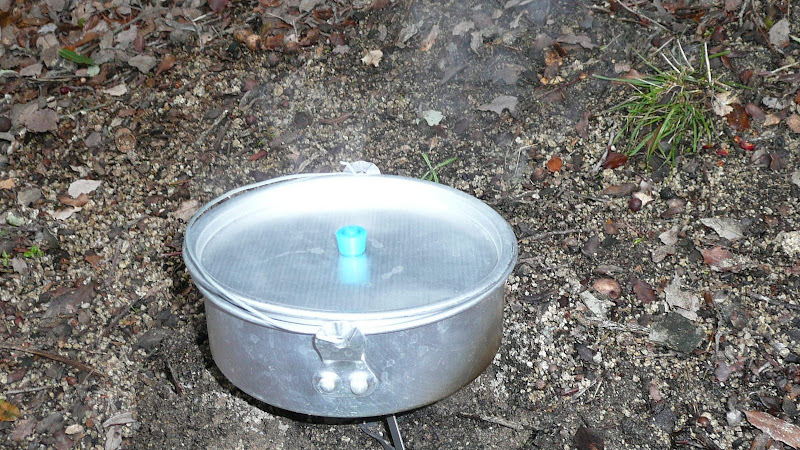
The steam is a bit hard to see, but for you doubters, here it is, a full roiling boil:

And now, for a delicious cup of tea.
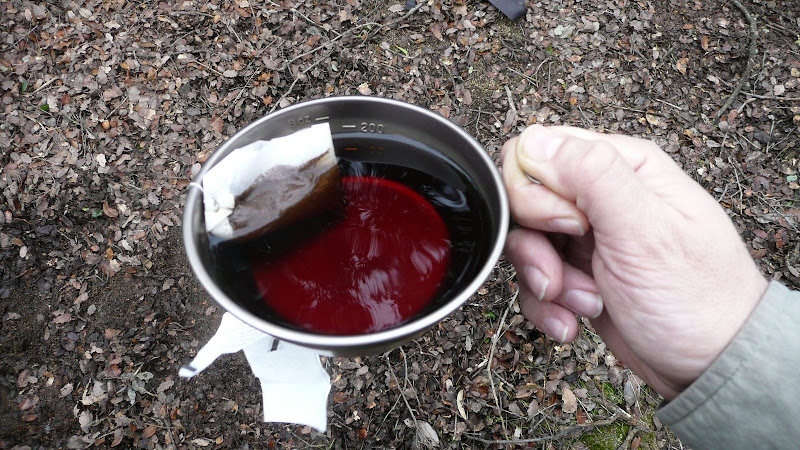
There are a couple of downsides to hexamine. 1) It's generally the most expensive fuel out there and 2) it leaves a brown residue on your pot. It wouldn't be so bad if the residue were a hard residue, but, no, the residue is sticky and gooey and gets all over things. I bring a plastic bag to put the pot in after use. The good news is that the residue comes off with ease.

One nice thing about hexamine is that it can be blown out. You do not need to burn the entire cube once lit. As it cools, hexamine forms these odd crystals.
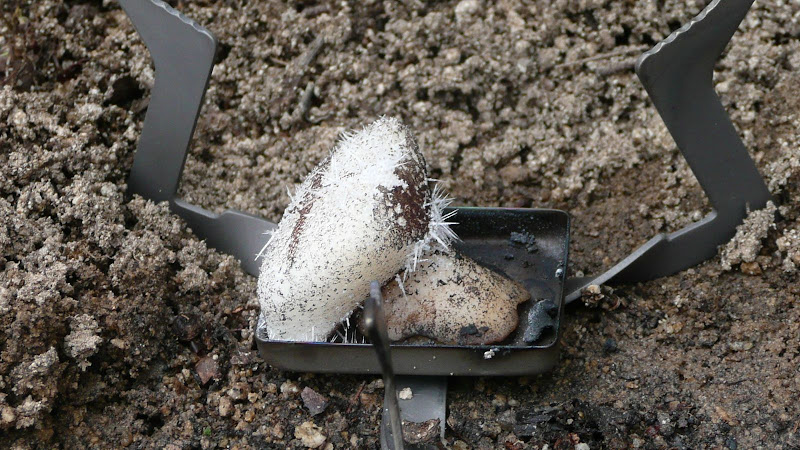
Finally, tea enjoyed full well, I fold the wings of the Ti Wing Stove. She's now ready to be stowed.
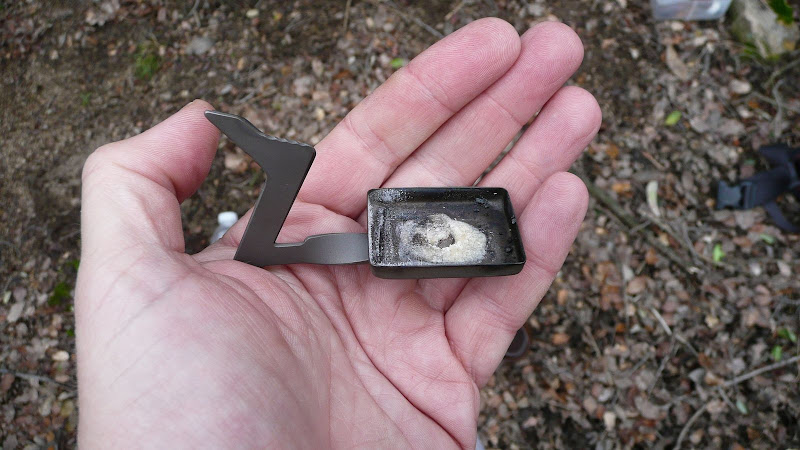
A most compact package. The stove weighs a mere 12g (less than half an ounce). The pot less than 3 ounces. For less than a quarter pound, I've got a nice set to brew up with. This is the lightest, most compact set up out there for hikers, hunters, mountain bikers, etc. It's not the most powerful or versatile. Definitely not one I'd want to have along in foul weather, but very light, compact, and easy to use.
I went hiking with my daughter yesterday by the way. We had a fabulous time sitting by a creek together. She enjoyed splashing her feet in the water. Daddy enjoyed a break. Can you see the family resemblance?

I hope you've enjoyed this, another installment in my "Stove of the Week" series.
HJ
Well, here's something I'd like to try: A "Stove of the Week" post. I doubt I'll be able to post a stove every week (but I'll try), but I collect stoves, I've got quite a number of interesting stoves, and I'd love to share them with you. I take them out quite frequently in the winter, but when the temperatures climb, less frequently so.
Related posts:
For starters, here is the Coleman Xpedition two burner backpacking stove. Yes, you read that correctly, a two burner backpacking stove. Not many of those out there!

The stove is shown here on the ruins of Echo Mountain House a hotel built in the late 1800's atop Echo Mountain (3207'/977m).
Now the stove has something of a story. First it came to me by way of a friend in England. Ian sent it to me simply because he knew of my affection for and interest in this type of stove. He asked for nothing in return. I thank you very much, Ian, and I apologize that it's taken me this long to get it fettled (repaired) and posted.
In terms of fettling, the "X" stoves that Coleman produced do have an achilles heel: their connector. I own half a dozen of the three types of "X" stoves (the Xtreme, Xpert, and Xpedition). I've seen multiple problems with their connector (the point at which the Powermax canister attaches to the stove).

Basically, the canister has a hex shaped protrusion on it. The hex is placed into the connector pictured above and rotated 1/6th turn to the right. As the hex rotates, it causes the inner cam in the photo above to rotate with it while the outer "finger plate" (Coleman's term for it) stays stationary. The protrusions on the inner cam force the "fingers" on the finger plate to expand and a small ridge on each finger is forced into a grove on the inside rim of the canister's valve assembly. The fingers when forced by the cam into the grove hold the canister in place such that the lindal valve is depressed, opening the valve and allowing the gas to flow. If you look closely at this photo, you can see the grove on the inside rim of the canister's valve assembly.
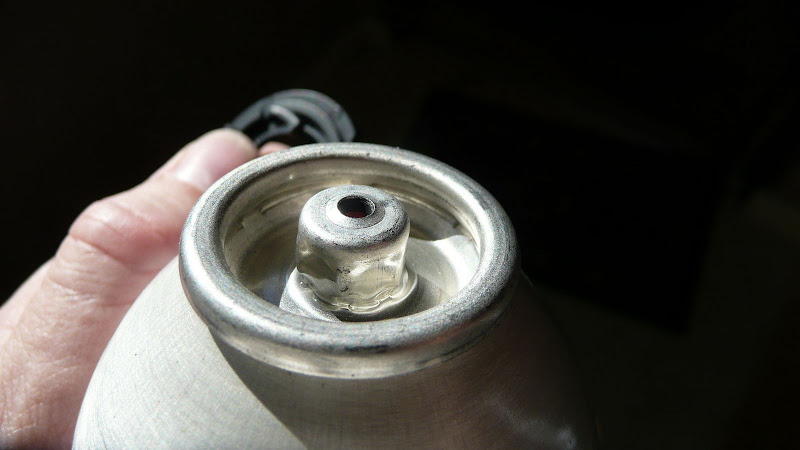
In theory. In practice, however, the inner cam just wasn't rotating. Instead, the canister's hex was rotating within the cam, stripping the plastic of the cam. If you look closely at the photo of the cam, two photos back, you can see some wear where I've stripped the cam.
"Well," thought I in all my full brilliance, "the fingers must be too tight, and they're not allowing the cam to rotate properly. I'll loosen them up a bit." Crack. One of the fingers broke off. Oh, great.
Well, no problem, I'll just order one from Coleman. Nope. Coleman no longer carries either the cam or the fingerplate. Stumped, I laid the stove aside for a while.
Some time later, I was tipped off that Campmor.com carries "trail maintenance kits" for the Coleman "X" stoves. The best deal is the Xpedition trail maintenance kit: it has more parts (and for a lower price) than the other kits. All of the kits are interchangeable even though some of the kits are labeled for one of the three "X" stoves or another. A bit expensive to buy an entire kit for just the finger plate, but having no other alternative, I bought a couple.

Here in this photo, you can see the difference between a nice, new cam and a worn cam.

But no dice. The derned thing still won't turn. I tried oil. I tried swapping parts out for new parts. I tried powdered graphite. Nothing I tried worked. The cam just wouldn't turn. I admit that at this point I just about binned the danged thing.
Now, fast forward some months. New Year's day 2011 is fast approaching. Now, we've something of a local tradition hereabouts, it's called the Rose Parade, which is a nationally televised event. As part of that parade, the US Air Force usually does a relatively low altitude fly by over the parade route. Lately, it's been the B-2 Stealth Bomber. Fascinating! There's a mountain that has a commanding view of the parade route. The last several years, quite a crowd has gathered upon the mountain top so as to have quite the view of the B-2 as it flies by. It's become an event in its own right, with people bringing stoves, cooking, and having quite the festive occasion. Well, if one wants to cook for a crowd AND one has to carry the stove up a mountainside, what better stove than a two burner Coleman Xpedition stove? It's relatively light, yet it has not one but two powerful burners. I thought, what could it hurt to pull the Xpedition off the shelf and have one more go at fettling?
Now, take one more look at that last photo. Note that the protrusions on the cams have sharp, hard right angled edges on them. What if I beveled them a bit? I got out a file. I don't know how well this will show in a photo, but here's a cam after I've beveled the leading edges of the protrusions.

Now, have I just wasted my time yet again?
 NO BY GOLLY I HAVE NOT!!!
NO BY GOLLY I HAVE NOT!!!
Phew! That's the best looking flame I've seen in a long time. The worst part of it of course is after months of time spent and untold frustration, it only took me a few minutes to bevel the edges and have the stove up and running. It's a fairly simple fettle -- once it occurs to you to try it. Don't become a stovie if you're not prepared to have a good laugh at yourself once in a while.
Well, then fettle done, off we go early the next morning. We've got to make it to the mountain top and be in position before 0800 when the fly by occurs. I'm carrying about 30 pounds of gear (about 13.5 kg); this will be no fast trek. My friend calls. He's running late. Ack! Off we go in a bit of a race against time!
It's a fairly cold morning by California standards; there's frost on the ground, indicating that the over night low has been below 32 F (0 C).
The San Gabriel Valley of California, pre-dawn.
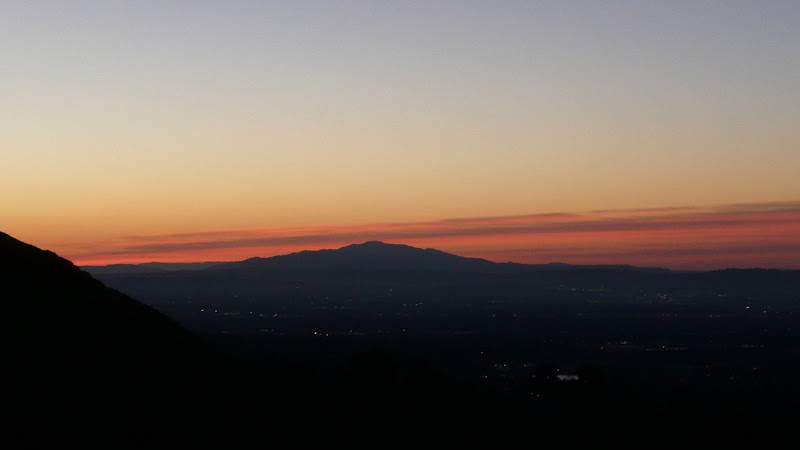
Here's another view of the greater Los Angeles area from further up the trail a bit later that morning. If you look closely at the uppermost of the two blimps, you can see the rose colored light of dawn. Downtown Los Angeles can be seen at the lower right.
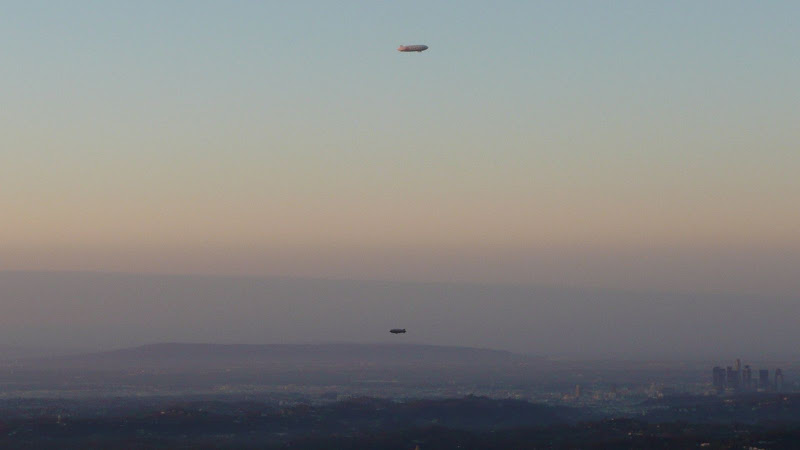
Finally, we're in position, and it's nearly 0800. We've made it in time. And there it is! The stealth bomber!

Unfortunately, I couldn't get him in frame when I maximized the zoom level (he was moving too fast), so that's not the best photo in the world, but I assure you it was quite exciting in person.
Here's my set up on the mountain top after the crowds have departed. I made hot water for instant oatmeal and instant cocoa for folks. The Xpedition did an admirable job of it.

The pots are 0.9 L and 1.5 L Primus LiTech kettles. Very convenient to pour from. By having two burners and two kettles, I could serve with one while heating more with the other, allowing me to provide hot water to a fair number of people.
The canteen seen at left is an orginal Swiss military one produced by Sigg. Sigg recently issued a retro version made of steel with a screw top. I saw one go recently for about $75.00 on eBay! I bought the original version for $7.13 total, and mine is lighter aluminum. I think I'll stick with my version although a cork stopper is not as secure as a screw top, and I worry I may get water spilled on my pack some day. I carry it strictly for the cool factor.
The windscreen you seen in the photo is the concatenation of one and a half Olicamp windscreens. One and a half windscreens makes an almost perfect fit for the Xpedition.

Here's the view from the top. The signs you see are historical interpretive signs explaining the various features of the site. The blue you see on the far horizon is the mighty Pacific Ocean.

And now that the crowds have gone, it's my turn to enjoy a cuppa.
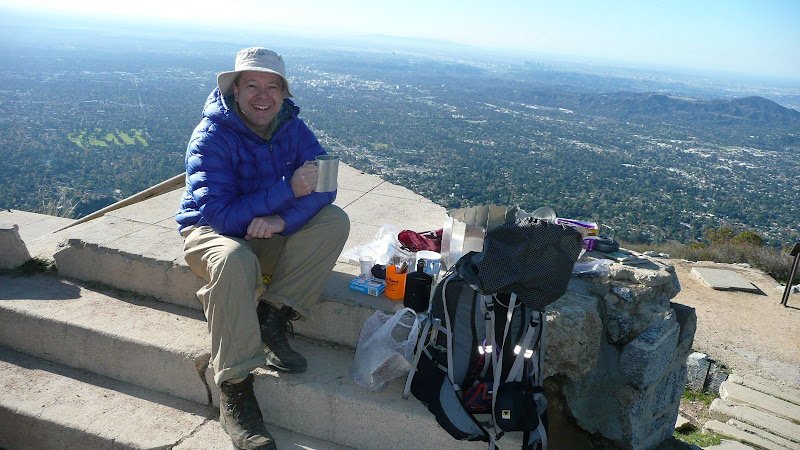
And if you look behind me, you can see why so many people have chosen to live in California: It's January, but it's a beautiful day. It's cold, there was frost still in the shady spots, but out in the sun a light down jacket like the one you see me wearing was all I needed. Not too bad for January.
Well, I thank you for joining me on my New Year's Day trip up Echo Mountain. I hope you've enjoyed the trip -- and the stove.
HJ







